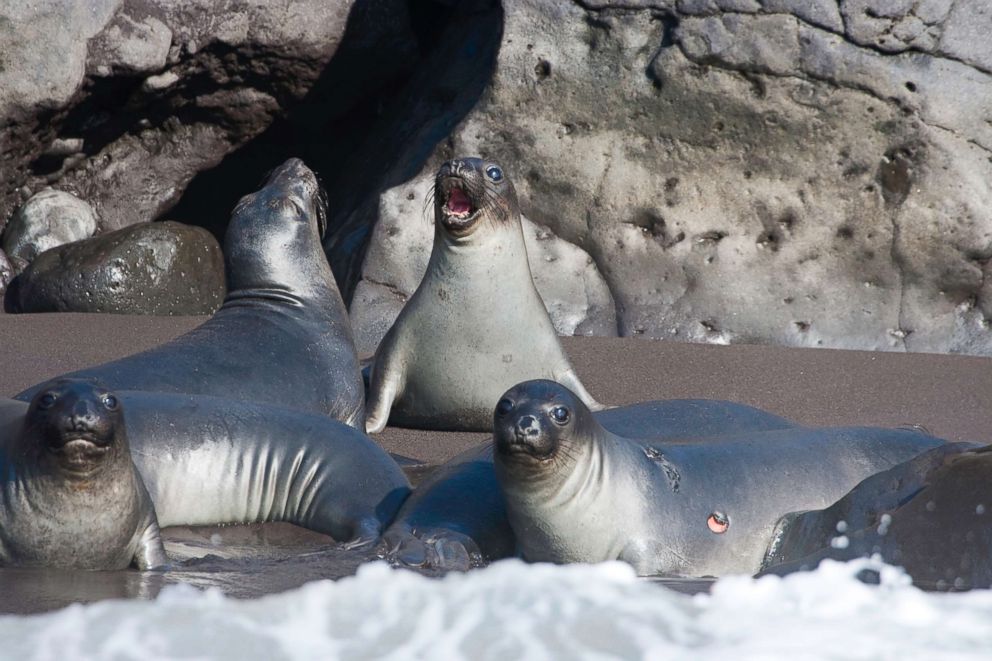Northern elephant seals have a more diverse language now that their populations are thriving
After 50 years, the dialects of male northern elephant seals has changed.
After nearly going extinct more than a century ago, populations of northern elephant seals have not only thrived, their "language" has changed too, according to a new study.
"It's much more diverse than it used to be," Caroline Casey, lead author of the study and researcher at the University of California, Santa Cruz, told ABC News. So it's no longer homogeneous. It's quite colorful with respect to acoustics."

The researchers compared the elephant seals' calls from four breeding sites along the western coasts of the United States and Mexico using audio that was collected from 1968 to 1969 and 2014 to 2015.
Fifty years ago, scientists could determine where a seal was from based on their dialect. But according to the study, that's changed — each seal has its own unique-sounding call.
"If you were thinking about music, you know, everybody from one colony used to have a very simple song or sounds that they made, and everybody sounded very similar to one another," Casey said. "And now instead of that, you have a bunch of different sounds."
Male elephant seals were chosen for this study because, like songbirds, they have distinguishable calls that female elephant seals don't have, Casey said. The male seals use their calls along with other physical displays -- such as elevated visual posturing and slamming their chests on the ground -- to establish dominance over "access to large harems of breeding females," the study said.
The researchers suggested in the study that dialects in the seals may have been more similar in the past because there was a scarcity of adult males — with more competition, there is a necessity to differentiate your call.

"They exchange calls with other males, and essentially, they listen to those calls and then decide to attack or retreat from that male because the calls serve basically as individual names for each male," Casey said.
An expanding population might have also increased diversity in their calls, Casey said.
Today, there are over 210,000 northern elephant seals, and their population continues to increase three to 4 percent each year, the study said.
“The elephant seals were almost hunted to extinction, and then they made a rebound,” Casey said. It's given researchers a chance to "observe how their behavior has changed as their population has recovered from near extinction."




